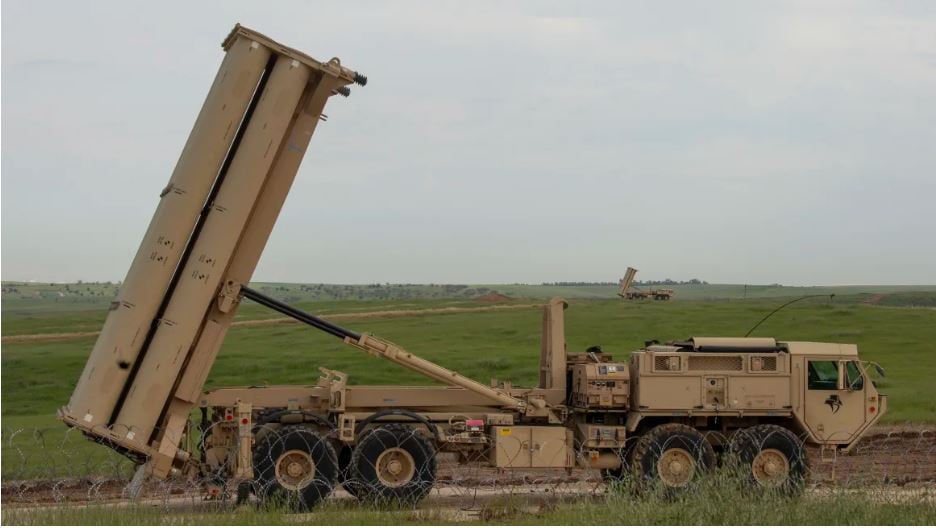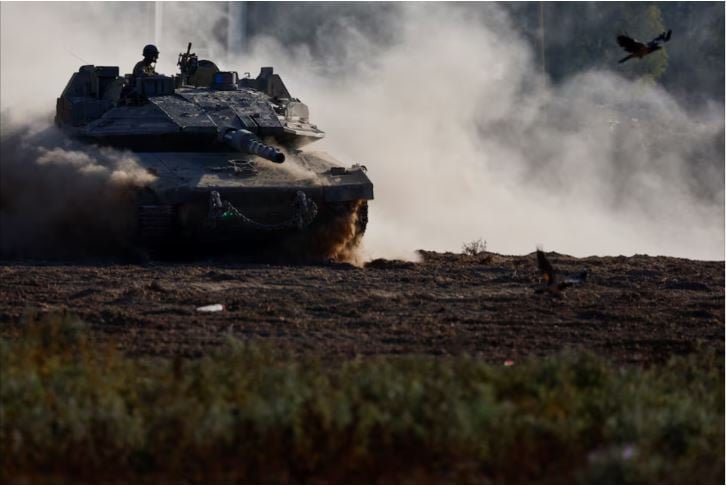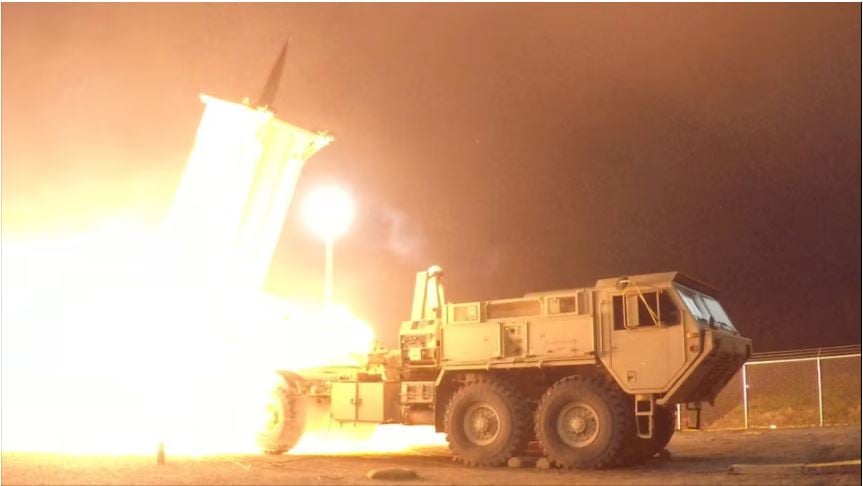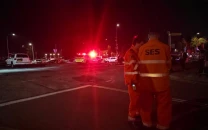US deploys THAAD to Israel: What is it and why it matters
The system uses radar and interceptors to destroy targets by colliding with them in a 'hit-to-kill' maneuver.

The United States is sending one of its most advanced anti-missile defense systems, the Terminal High Altitude Area Defense (THAAD), to Israel in response to growing missile threats from Iran.
With tensions escalating, the deployment of the THAAD system is expected to bolster Israel’s already sophisticated air defenses, adding another layer of protection after a series of Iranian missile attacks earlier this month.
The move follows Iran’s launch of over 180 missiles toward Israel on October 1, which marked a significant escalation in the ongoing conflict.

This US military file photo shows a US Army Terminal High Altitude Area Defense (THAAD) launching station in Israel on March 4, 2019. Staff Sgt. Cory D. Payne/US Air Force/File
US officials have not provided a specific timeline for when the system will be operational, but its arrival was confirmed by Washington on Sunday.
Major General Pat Ryder, Pentagon spokesman, said in a statement that Defense Secretary Lloyd Austin authorized the deployment of the THAAD battery at the direction of President Joe Biden.
What is THAAD, and how does it work?
THAAD is one of the US military’s most powerful tools for intercepting incoming missiles.
Developed by Lockheed Martin, it’s designed to neutralize short-, medium-, and intermediate-range ballistic missiles during their final phase of flight.
Using radar and interceptors, the system can destroy targets either inside or outside the atmosphere by colliding with them in a “hit-to-kill” maneuver, rather than detonating a warhead near the incoming missile.

An Israeli tank manouvers near the Israel-Gaza border, amid the ongoing conflict between Israel and Hamas, in Israel, August 14, 2024. REUTERS/Amir Cohen
A typical THAAD battery consists of six truck-mounted launchers, each armed with eight interceptors, and a radar system built by Raytheon.
It takes around 100 troops to operate one battery. In 2019, a THAAD system was deployed to southern Israel for military drills, but this will be its first operational mission in the region.
Why does Israel need THAAD?
Israel already has one of the most advanced air defense systems in the world, including the Iron Dome for short-range threats, David’s Sling for medium-range missiles, and the Arrow system for long-range ballistic missile interceptions.

THAAD interceptor, Kodiak, Alaska, July 30, 2017. Courtesy Leah Garton/Missile Defense Agency/Handout via REUTERS
The deployment comes as Israel faces increasing missile threats from Iran and Iranian-backed groups in the region.
THAAD adds a new dimension to Israel’s layered defense, specifically by enhancing its ability to intercept missiles in the upper atmosphere and space. The system's radar can track targets up to 3,000 kilometers (1,865 miles) away, which provides earlier detection and gives Israeli defenses more time to respond.
Iran's response
Iran’s reaction to the THAAD deployment has been swift. Iranian Foreign Minister Abbas Araqchi warned that the US is putting its troops at risk by sending them to operate missile systems in Israel.
He also issued a broader threat, stating that Tehran has “no red lines” when it comes to defending its interests.
For the US, the deployment is part of a strategy to deter Iran and support Israel while avoiding an all-out regional war.
Although the Biden administration has voiced concerns over Israeli military strikes on Iran, the US continues to bolster Israel's defenses, aiming to prevent further escalation.
This isn’t the first time the THAAD system has been at the center of geopolitical tensions.
Its deployment in South Korea in 2017 led to a diplomatic rift with China, which opposed the system due to its powerful radar that could potentially monitor Chinese military movements.
THAAD is also deployed in Guam to protect US military bases from possible missile threats by North Korea.
In the Middle East, however, its deployment is seen as a significant step to counter Iranian aggression.






1701351241-1/Afghan-refugees-(3)1701351241-1-208x130.webp)















COMMENTS (1)
Comments are moderated and generally will be posted if they are on-topic and not abusive.
For more information, please see our Comments FAQ